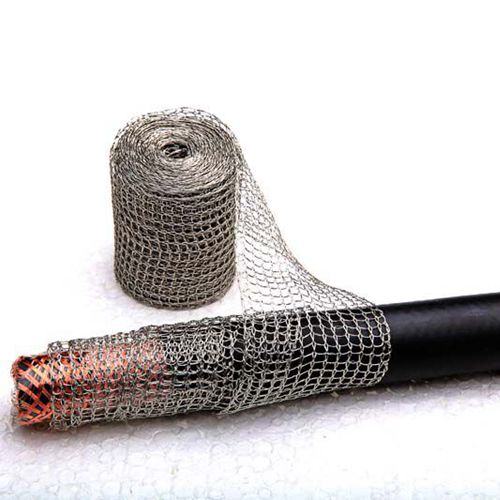A knitted wire mesh shielding gasket is a specialized gasket designed to provide both sealing and electromagnetic interference (EMI) shielding capabilities. It is constructed using a knitted wire mesh material that offers flexibility, conductivity, and effective shielding properties.
Here are the key features and characteristics of knitted wire mesh shielding gaskets:
Shielding Effectiveness: Knitted wire mesh gaskets are engineered to provide high levels of EMI shielding effectiveness. The interlocking loops of the knitted wire form a continuous conductive path, which helps to attenuate and block electromagnetic signals across a wide frequency range.
Conductivity: The wire used in the knitted mesh gasket is typically made from highly conductive materials such as stainless steel, copper, or other metal alloys. This conductivity ensures efficient grounding and helps to divert and dissipate electromagnetic energy away from sensitive components or devices.
Flexibility and Conformability: Knitted wire mesh gaskets offer excellent flexibility and conformability. They can be easily compressed and deformed to create a reliable seal around mating surfaces, even in applications with irregular shapes or surfaces. The flexibility allows the gasket to maintain consistent contact, ensuring optimal shielding performance.
EMI Sealing and Environmental Protection: In addition to EMI shielding, knitted wire mesh gaskets also provide sealing capabilities. They can effectively seal gaps, joints, or interfaces to prevent the ingress of dust, moisture, or other contaminants. This dual functionality of EMI shielding and sealing helps to protect sensitive electronics and equipment from environmental factors.
Customization: Knitted wire mesh shielding gaskets can be customized to meet specific application requirements. They can be tailored in terms of size, shape, thickness, and compression characteristics to ensure a proper fit and optimal performance in the intended application.
Knitted wire mesh shielding gaskets find wide application in industries such as electronics, telecommunications, aerospace, defense, and medical devices. They are commonly used in equipment enclosures, connector interfaces, printed circuit board (PCB) shielding, electronic cabinets, communication systems, and other sensitive electronic devices or assemblies that require reliable EMI shielding and environmental sealing.
